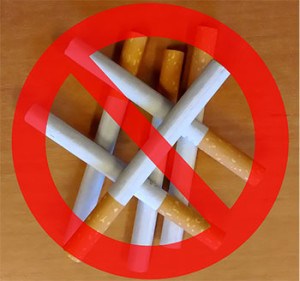Follow Us!
- Sign up to receive news and updates and get my free report:“The Top 10 Reasons to Try Acupuncture”

- TestimonialsI just wanted to send a short note to express a large thank you. I have suffered from bursitis (and some arthritis) in my hips for years. I have had physical therapy and many painful cortisone shots that help short term then the pain comes right back. While visiting my daughter I went to see her acupuncturist, Jenny. The treatment was like a miracle. My hip pain gone! I am back to exercising, and taking long walks, something I was... Read more »
Jenny Nieters and John Nieters are wonderful acupuncturists who take great care of their patients. Jenny has taken care of my achilles heel pain, lumbar pain, and diagnosed more accurately than others quadratus lumborum instability. John is extremely knowledgable about all things reproductive and brings a quiet nurturing atmosphere to his practice. I entrust these folks with my care wholeheartedly.
Ashley McCaughan DVM Marina Village Veterinary and Holistic Care 943 Marina Village Parkway... Read more »John and Jenny Nieters at Alameda Acupuncture are absolute gems.
I stumbled across John’s radio show, The Balancing Point, and had been a listener for a while when I decided to make an appointment. Years after having my son, my menstrual cycles never really came back and I was having lots of different symptoms that seemed to point to endocrine issues.
My first appointment with John was awesome. He spent at least two hours with me, talking and getting to
... Read more »I have been a patient of John Nieters for many years. He is an amazing healer who has helped me though physical and emotional challenges. Dr. John is generous with his time and extremely knowledgeable. He is the first one whose opinion I seek when my health needs attention.
Last Spring after he assessed my shoulder and hip pain he recommended that Jenny treat me. This recurring pain had remained with me through several years of regular massage, regular chiropractic
... Read more »Hi everyone!!!
I have been anxious ( in a good way), to submit my testimonial regarding Dr. John and Jenny Nieters of Alameda Acupuncture!!!! THEY ARE FANTABULOUS /that means, fantastic and fabulous !!! I love them dearly. They are just very empathic, humble, very intelligent and down home folks.I have been treating 12 weeks with Jenny Nieters. Her combination of Chinese Medicine with Acupuncture, is genius. She knows her stuff, 100%. She has such a sweet disposition, a
... Read more » -
Latest Articles:
- • Spring Clean Your Way to Better Health •
- • 5 Healthy Ways to Embrace the Spring Season •
- • Fun Things to do this Spring •
Health
5 natural ways to improve women’s health
 Egg health
Egg health
Getting pregnant can be frustrating when it isn’t happening as easily as planned. There are many reasons you could be dealing with a difficult pregnancy including egg health. There are many factors that play into egg health including blood circulation, stress and hormonal balance. For improving blood and oxygen flow, try to get some sort of exercise whether it is yoga, running or simply going on a brisk walk at least three times a week. Ask a massage therapist about abdominal massage, which can increase blood flow to the reproductive system. Stress can also play a very important factor in egg health. Find ways to de-stress with meditation practices, acupuncture and deep breathing. continue reading
Kidney and Bladder Health & TCM
 The kidney is an especially important organ in Traditional Chinese Medicine. Not only does it flush out the unwanted toxins from our body, but is believed to support the body’s reproductive system as well as regulate the circulation of fluids in the body.
The kidney is an especially important organ in Traditional Chinese Medicine. Not only does it flush out the unwanted toxins from our body, but is believed to support the body’s reproductive system as well as regulate the circulation of fluids in the body.
In TCM, the kidney is the source of yin and yang, the cooling and warming energies that keep your body in balance.
When the kidney/bladder system is weak and not functioning properly, this can result in different problems and imbalances throughout the body. continue reading
7 Steps to Detox After the Holidays
 Get rid of leftovers
Get rid of leftovers
The holidays bring delicious homemade food, and along with that come the leftovers. Holiday leftovers can be just as good as when you cook the meal the first time and become a tempting go-to snack. Time to let go. Toss the leftovers, they most likely aren’t the healthiest dishes and it’s time to start fresh.
Stay hydrated
Most Americans do not drink enough water, and there is no better time to start than now! Fill up your glass at least 8 times a day. Some find it easier to carry a water bottle throughout the day to remind yourself to keep hydrated. Staying hydrated can flush out toxins and detox your body, as well as keeping you feeling good. continue reading
Steps to Stay Smoke-Free
 So you’ve quit smoking, or maybe you’re trying and not sure how long you will last. Either way, quitting is not easy, and staying smoke-free in the long term is even harder. You may have periods of time when you’re feeling confident and a cigarette is the last thing on your mind, or you may all of a sudden have intense cravings. Below are some ways to help keep you smoke-free for a better, healthier life. continue reading
So you’ve quit smoking, or maybe you’re trying and not sure how long you will last. Either way, quitting is not easy, and staying smoke-free in the long term is even harder. You may have periods of time when you’re feeling confident and a cigarette is the last thing on your mind, or you may all of a sudden have intense cravings. Below are some ways to help keep you smoke-free for a better, healthier life. continue reading
Heat Stroke Danger
 If you have every had heat stroke or heat exhaustion, take care to not repeat the experience. Based on a study that followed heat stroke patients from the 1995 Chicago heat wave, people who have experienced heat stroke have 28% higher risk of death in the following year.
If you have every had heat stroke or heat exhaustion, take care to not repeat the experience. Based on a study that followed heat stroke patients from the 1995 Chicago heat wave, people who have experienced heat stroke have 28% higher risk of death in the following year.
What to do:
- Limit exposure.
- Stay hydrated.
- Avoid alcohol and coffee.
- Eat light meals.
- Douse pulse points with water.
- Wear clothing/fabrics that “breathe.”
- Lower core body temp with a cool bath.
- See a professional to help clear lingering heat using Chinese medicinals and acupuncture.
Heatstroke symptoms include:
High body temperature. A body temperature of 104 F (40 C) or higher is the main sign of heatstroke.
Altered mental state or behavior. Confusion, agitation, slurred speech, irritability, delirium, seizures and coma can all result from heatstroke.
Alteration in sweating. In heatstroke brought on by hot weather, your skin will feel hot and dry to the touch. However, in heatstroke brought on by strenuous exercise, your skin may feel moist.
Nausea and vomiting. You may feel sick to your stomach or vomit.
Flushed skin. Your skin may turn red as your body temperature increases.
Rapid breathing. Your breathing may become rapid and shallow.
Racing heart rate. Your pulse may significantly increase because heat stress places a tremendous burden on your heart to help cool your body.
Headache. Your head may throb. ( Mayo Clinic.)
In July 1995, Chicago sustained a heat wave that resulted in more than 600 excess deaths, 3300 excess emergency department visits, and a substantial number of intensive care unit admissions for near-fatal heat stroke.
OBJECTIVE:
To describe the clinical features of patients admitted to an intensive care unit with near-fatal classic heat stroke. Patients were followed for 1 year to assess delayed functional outcome and mortality.
DESIGN:
Observational study.
SETTING:
Intensive care units in the Chicago area.
PATIENTS:
58 patients admitted to the hospital from 12 July to 20 July 1995 who met the case definition of classic heat stroke.
MEASUREMENTS:
The data collection tool was designed to compile demographic and survival data and to permit analysis of organ system function by abstracting data on physical examination findings, electrocardiography and echocardiography results, fluid resuscitation, radiography results, and laboratory findings. Data on functional status at discharge and at 1 year were collected by using a modified Stanford Health Assessment Questionnaire.
RESULTS:
Patients experienced multiorgan dysfunction with neurologic impairment (100%), moderate to severe renal insufficiency (53%), disseminated intravascular coagulation (45%), and the acute respiratory distress syndrome (10%). Fifty-seven percent of patients had evidence of infection on admission. In-hospital mortality was 21%. Most survivors recovered near-normal renal, hematologic, and respiratory status, but disability persisted, resulting in moderate to severe functional impairment in 33% of patients at hospital discharge. At 1 year, no patient had improved functional status, and an additional 28% of patients had died.
CONCLUSIONS:
Near-fatal classic heat stroke is associated with multiorgan dysfunction. A high percentage of patients had infection at presentation. A high mortality rate was observed during acute hospitalization and at 1 year. In addition, substantial functional impairment at discharge persisted 1 year. The degree of functional disability correlated highly with survival at 1 year.
http://www.ncbi.nlm.nih.gov/pubmed/9696724



